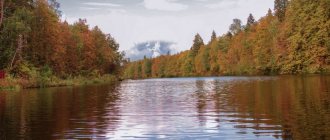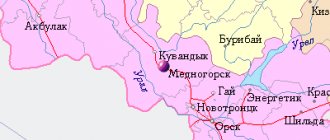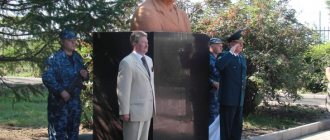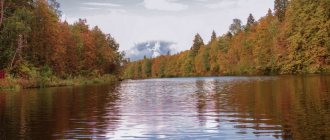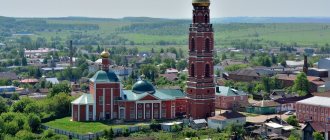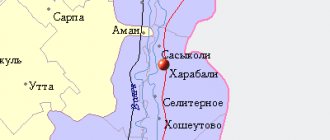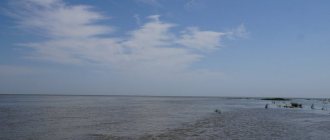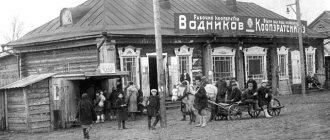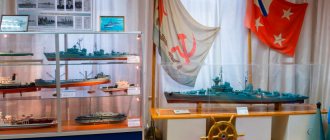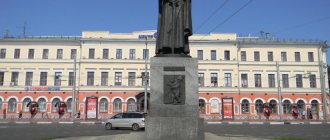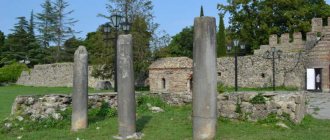No other region of Russia has so many ancient, beautiful places and architectural monuments as the Moscow region. Beautiful nature, ancient estates, a large number of churches, monasteries, houses in which great writers and artists lived and worked. There are many old cities in the Moscow region, founded during the Middle Ages. Below is a list of the most ancient cities near Moscow.
Ancient Russian cities of the Moscow region
In total, there are 74 cities in the region. The oldest of them, Volokolamsk, has been known since 1135.
Another old-timer near Moscow, Zaraysk, appeared in 1146.
The ancient city on Osetra is famous for its perfectly preserved stone Kremlin
.
Just a few years younger than it is located to the north of the capital Dmitrov
, which was founded 7 years later than Moscow - in 1154.
Volokolamsk Kremlin
Each city near Moscow has its own face and history. People go to Kolomna to admire the ancient Kremlin
, in
Sergiev Posad
- the Trinity-Sergius Lavra, and in Zvenigorod - to touch the shrines of the Savvino-Storozhevsky Monastery. Klin is famous for the house-museum of Pyotr Ilyich Tchaikovsky, Voskresensk - for the Spasskoye and Krivyakino estates, Aprelevka - for the gramophone record factory, famous in Soviet times.
Traveling around the cities of the Moscow region is interesting and easy. Public transport is well developed in the region. There are regular buses to almost every city, and many have a railway line. In addition, in every city near Moscow there are hotels and guest houses where you can stay for one or two days for a detailed exploration of all the local attractions.
Kolomna Kremlin
Wedge
Klin has amazingly preserved monuments from different eras: buildings of the 18th century, houses and estates of merchants and nobles, ancient temples and churches. The most beautiful of them are located on the territory of the Klin Kremlin: this is the Trinity Cathedral and the Resurrection Church with a high hipped bell tower, which was built in 1712. Nearby is one of the most ancient religious buildings in Klin - the Assumption Church of 1572, charming in its modesty and purity of lines. From the Kremlin, only the defensive fortress ravine has survived to this day, which in the past served as an additional protective barrier from enemies.
The historical center of Klin is extremely picturesque and pleasant for walks. Among the notable buildings, it is worth noting the Trading Rows, built in the 19th century, and the Mayor’s House, built a century earlier, the Postal Yard, and the house-shop “under the clock.” The Tchaikovsky House Museum, where The Nutcracker, The Sleeping Beauty and the Fifth Symphony were created, deserves attention. Literature fans should visit Gaidar’s house-museum, where he completed work on the cult work “Timur and His Team.”
Estates of the Moscow region
Ancient estates are a real decoration of the Moscow region. The history of many of them begins in the distant 16th century. It was then that the first estates appeared around Moscow, many of which later grew into real palace and park ensembles.
The pearl of the Moscow region is considered to be the Arkhangelskoye estate, located not far from the capital, in the Krasnogorsk district.
Its heyday came at the beginning of the 19th century, when the owner of this estate was Nikolai Borisovich Yusupov.
Arkhangelskoye Estate
The fashion for building country residences and arranging landscape parks, which came from Europe, gave rise to a whole construction boom around Moscow in the 17th century. And besides Arkhangelsk, classical estates arose in Ostafyevo and Yaropolets.
Each estate had its own infrastructure, stables and churches. Perhaps the most remarkable temple, recognized by UNESCO as an architectural monument of world significance, was the Church of the Sign in the Dubrovitsy estate,
near the city of Podolsk. This 42 m tall, slender temple, erected by the talent of an Italian architect near the mouth of the Desna River, glows from afar with the gilded “crown” of the dome.
Znamenskaya Church in the Dubrovitsy estate
Many tourists come to the Abramtsevo estate
, which now has the status of a museum-reserve. The fame of the estate near Moscow was brought by artists, performers and historians who lived and visited these places.
A.S. spent his childhood and adult years in estates around Moscow. Pushkin
(Zakharovo), A.A.
Blok (Shakhmatovo), F.I. Tyutchev (Muranovo) and A.P. Chekhov (Melikhovo). Many of them are associated with epoch-making events for Russia. And the life of the estate and the morals of landowners and peasants are reflected in the best monuments of Russian literature created by L.N.
Tolstoy , I.A. Goncharov and I.S. Turgenev.
Main house in the Abramtsevo estate
Sergiev Posad
The spiritual capital of the Moscow region and the famous city of the Golden Ring, which cannot be avoided in any review. Several separate articles can be written about its tourist and pilgrimage advantages, but Sergiev Posad is good not only for short trips and historical excursions, but also for life. In 2014, the 700th anniversary of Sergius of Radonezh was celebrated here on a grand scale, and therefore the city was actively renovated and improved. As an unexpected bonus, locals note the pleasant climate and mild winters.
There are few new buildings here. Sergiev Posad is located far from the capital - fifty kilometers from the Moscow Ring Road - and is suitable for lovers of small toy towns and living history. It has its own theater and regularly hosts exhibitions and festivals. In addition, it is the largest center of theological education in the Russian Orthodox Church.
From Moscow you can get to the city by train or bus from the Yaroslavl station.
Monasteries and churches of the Moscow region
In the Moscow region there is one of the holiest places for believers - the Trinity-Sergius Lavra.
Over its seven-hundred-year history, this monastery in Sergiev Posad has always been a place of pilgrimage and worship.
40 km west of Moscow, in Istra, there is another monastery, built in the likeness of Jerusalem, and for this similarity it was called New Jerusalem
. In total, there are more than 20 Orthodox monasteries in the Moscow region.
Resurrection New Jerusalem Monastery
It is noteworthy that despite the vicissitudes of recent centuries, the wars that have not bypassed the Moscow region, very ancient churches have been preserved here.
The oldest churches in the Moscow region are considered to be those built in the second half of the 14th century - St. Nicholas Church in the village of Kamenskoye and the Temple of John the Baptist on the Settlement in Kolomna.
At the beginning of the 15th century, the Nativity Cathedral and the Assumption Cathedral were erected on Gorodok in Zvenigorod, as well as the Staronikolsky Cathedral and the Church of Joachim and Anna in Mozhaisk.
Ascension David's Hermitage
Kolomna is in the top of the most beautiful and oldest in the Moscow region
Kolomna has the status of one of the most beautiful towns near Moscow with a rich history. The first mention of the settlement dates back to 1177, but the real flourishing began in the 16th century, when, by order of Tsar Vasily III, a Kremlin was founded here, which in beauty and grandeur can compete with the Moscow one. The walls of the Kolomna Kremlin have seen many great events. Here Dmitry Donskoy gathered an army before the famous Battle of Kulikovo, and Ivan the Terrible before his campaign against Kazan.
Behind the red brick walls with imposing towers is Kolomna's main religious monument - the five-domed Assumption Cathedral of 1379, erected in honor of the victory of Dmitry Donskoy over the army of the Golden Horde. It is located on Cathedral Square, the architectural ensemble of which fascinates and amazes with its grandeur. There are other interesting religious buildings nearby:
- Holy Trinity Novo-Golutvin Convent;
- Tikhvin Church, notable for its wide bell tower;
- The Church of the Ascension of the Word is one of the oldest religious buildings in Kolomna.
If, after immersing yourself in the historical past, you want to relax and have fun, the whole family should go to Peace Park, visit the skating center, or take a boat on an exciting river cruise.
Museums of the Moscow region
Every city in the Moscow region and many rural settlements have their own museums. So the number of museum collections in the region has exceeded one hundred and fifty. An excellent opportunity to get acquainted with all the folk crafts that exist in the cities and towns around the capital is to visit the Museum of Folk Crafts of the Moscow Region, which operates in the village of Fedoskino. In addition to the famous Fedoskino lacquer miniatures, porcelain from Gzhel and Verbilok, Pavlovo Posad shawls, painted Zhostovo trays, wooden carved Bogorodsk toys and Christmas tree decorations that are made in Klin are on display here. Almost all the craft traditions of the region - in one place!
Museum-reserve "Borodino Field"
It is also interesting to visit the famous tank museum in Kubinka, 64 km from the capital. Here, in a large open-air area and in seven pavilions, domestic and foreign armored vehicles are presented. There is no such collection anywhere in the world.
125 km west of the capital is located one of the most famous museum complexes in Russia - Borodino Field, which was organized in 1839.
This place has the status of a museum-reserve and is considered one of the oldest museums in the world, based on the sites of epoch-making battles. Not only excursions are held here, but also large-scale military-historical holidays: “Borodin Day” and “The Steadfast Tin Soldier”.
Ostafyevo Estate Museum
Zaraysk - small but interesting
Zaraysk is a very small and cozy town with a population of just over 20,000 people. However, there are so many attractions here that large cities can only be envied. Small Zaraysk has its own Kremlin, within the walls of which is a unique collection of paintings, art, furniture and folk crafts. Built in 1528, the fortress is surrounded by thick walls and red brick watchtowers. A unique feature of the monument is that it is the only fully preserved military Kremlin in the Moscow region.
The dominant feature of the fortress is the St. Nicholas Church, built after Zaraisk lost its status as an important defensive point. The oldest building in the city is considered to be the white stone Church of St. Nicholas the Wonderworker, where an icon dedicated to the saint is kept. It is interesting to see the water tower built in 1914 and a more ancient landmark: the Zaraisky shopping arcade with Gostiny Dvor, created during the time of Catherine II. On the streets of the city you can find many monuments, for example, to Pozharsky, Meretskov or Dostoevsky. The sculpture in honor of the latter was not installed by chance: 12 km from Zaraysk there is the estate of Fyodor Mikhailovich “Zapovednoye Darovoye”, where the writer’s house-museum is organized and the way of life of the 19th century is preserved.
Protected areas and natural monuments of the Moscow region
The Moscow region is an industrially developed region with a dense transport network, which has many environmental problems. There is only one nature reserve in the region - Prioksko-Terrasny, stretching along the left bank of the Oka River. Here the bison are protected and the northernmost populations of the steppe flora are preserved.
In addition to this reserve, in the region on the lands of the Upper Volga Lowland there is part of the areas of the Zavidovo National Park. The dendrological park named after Academician A.S. also has the status of a specially protected natural area. Yablokov, which is located in Ivanteevka.
And in the city of Lobnya there is the famous moraine-glacial lake Kiyovo, which, like the basin surrounding the reservoir, also has the status of a natural monument.
Nikolo-Ugreshsky Monastery
Not far from Sergiev Posad you can see cold springs and the beautiful Gremyachiy Klyuch
. The natural attraction is beautifully landscaped. Near the springs there is a beautiful temple and chapel, there are walkways, stairs, a bathhouse and gazebos for relaxation.
Over 40% of the territory of the Moscow region is occupied by forests, most of which are mixed. They are home to many animals - foxes, wild boars, moose, hares, squirrels and badgers, and 170 species of birds live. Bears, wolves and lynxes come to the border of the Moscow region from neighboring regions. However, environmental problems associated with overpopulation, transport and industrial overload do not have the best effect on the state of the flora and fauna of the region.
Bird's eye view of the rattling key
Prioksko-Terrasny State Natural Biosphere Reserve named after Mikhail Zablotsky
Zubritsa with a baby. Photo: Alexander Kulichenko
Roe. Photo: Alexander Kulichenko
Boars. Photo: Alexander Kulichenko
Boar. Photo: Alexander Kulichenko
Shore swallows. Photo: Alexander Kulichenko
Fox. Photo: Photo: Alexander Kulichenko
Distance: 81 km from the Moscow Ring Road via Simferopol Highway.
Do you want to see with your own eyes the living peers of prehistoric mammoths and saber-toothed tigers? Then drive strictly south along the Simferopol highway for about 80 kilometers, and opposite Serpukhov turn left - it is here, in the town of Danki, that unique animals live in their natural environment - bison.
This island of wildlife in the most densely populated region of Russia is the only nature reserve in the Moscow region. In addition to bison, you can find 10 species of amphibians, 5 species of reptiles, 143 species of birds and 62 species of wild mammals, including sika and European deer, roe deer, wild boars, beavers, badgers, martens, wolves and lynx. There are also 285 species of spiders and 620 species of butterflies - for example, swallowtail and Apollo.
In fact, the reserve was initially created to preserve several small clearings with southern plants unique to our latitudes: scientists still do not understand how about 100 species of inhabitants of the southern steppes could take root in the Oka floodplain, 600 kilometers north of their usual habitats.
But still, the main and most amazing attraction of the Prioksko-Terrasny Reserve is the bison: “the king of the bulls,” a wild forest bull, the largest ungulate animal in Europe. Believe me, meeting a herd of bison in the forest will give you an unforgettable experience.
A bison nursery was organized here in 1948 so that these relict animals would not repeat the fate of mammoths and restore the population in Russia. 20-25 Euro bison and 5 American bison, their closest relatives, live and breed in the nursery all the time. The grown-up bison are transferred from the pen located on the excursion trail to an area closed to visitors: soon they will have a free life and it’s time to get out of the habit of friendly communication and taking pictures with visitors to the reserve.
However, in addition to untouched nature and wild animals, the reserve also has civilized entertainment: the ecological trail “Through the Foliage” at an altitude of 8 meters, the rope eco-park “Tree-House” and the Museum of Nature, where you will be introduced to the inhabitants of the forest. There is even an art object called “Seasons” – a mirror fence with images of bison in 3D format, which reflects the surrounding landscape and creates the illusion of the presence of spectators among the animals.
Excursions to the forest residence of the “king of the bulls” are held from Monday to Friday at 11:00, 13:00 and 15:00 with a minimum group gathering of 5 adults. On weekends and holidays, excursion groups are formed every hour from 09:00 to 16:00. Ticket price for adults is 400 rubles, for schoolchildren – 200 rubles, children under 6 years old are free. The cost of children's tickets for ecological trails ranges from 150 to 500 rubles.
Danki town, Serpukhov district, Moscow region View on map
8 pt-zapovednik.ru
Where to go with children in the Moscow region
All children love zoos. And if in the capital itself there is only one such entertainment, then in the Moscow region there are several of them. And what kind! The huge “Exotic Park” houses collections of a wide variety of animals from all over the world. But most of all there are representatives of cats and primates. This zoo is located at 47 km of Kaluga Highway.
Another place that children will definitely enjoy is the bison nursery of the Prioksko-Terrasny Nature Reserve. It is located near the city of Serpukhov.
An interesting Pastila Museum has been opened in Kolomna (Posadskaya St., 13A). Delicious apple lozenges made this town near Moscow famous in the 18th-19th centuries. An extensive excursion program around the museum, in addition to getting acquainted with the technology and history of making the sweet delicacy, includes tasting different types of marshmallows with fragrant tea. And if children, especially boys, have an interest in cars, it’s worth going to the Vadim Zadorozhny Museum of Technology, which operates in Krasnogorsk, not far from the capital, 4 km from Ilinskoye Highway.
Marfino Estate
It contains more than a thousand exhibits of retro technology - cars, motorcycles and airplanes. Moreover, you are allowed to touch every exhibit! An interesting excursion can also be taken to Sergiev Posad - to the unique Toy Museum, to Zhukovsky - to the Museum of the History of the Conquest of the Sky, or to the Clown Museum, which is located in the rural settlement of the state farm named after. Lenin.
List of cities in the Moscow region by distance from Moscow
The cities of Lyubertsy, Kotelniki and Reutov top the list; they are located 2 km from the capital, Dzerzhinsky and Khimki - 3 km, Krasnogorsk - 4, Vidnoye and Odintsovo - 5 km, Dolgoprudny - 6, Balashikha and Shcherbinka - 8 km, Mytishchi - 9 km , Yubileiny - 10, Moskovsky - 11 km, Zheleznodorozhny, Lytkarino and Korolev - 12 km, Lobnya - 14 km, Domodedovo - 15 km, Podolsk - 16 km, Troitsk - 18 km, Ivanteevka, Pushkino and Shchelkovo - 19 km, Dedovsk - 20 km, Zhukovsky, Staraya Kupavna and Elektrougli - 23 km, Klimovsk - 24 km, Aprelevka - 25 km, Fryazino - 27 km, Golitsino and Ramenskoye - 28 km, Krasnoznamensk and Losino, Petrovsky - 29 km, Istra - 36 km, Noginsk – 37 km, Krasnoarmeysk – 39 km, Bronitsy and Zvenigorod – 41 km, Elektrostal – 42 km, Chernogolovka – 43 km, Solnechnogorsk – 44 km, Dmitrov, Yakhroma and Kubinka – 48 km, Chekhov – 50 km, Khotkovo – 53 km, Sergiev Posad – 55 km, Naro-Fominsk – 57 km, Pavlovsky Posad – 59 km, Elektrogorsk – 64 km, Klin – 66 km, Peresvet – 71 km, Drezna – 72 km, Serpukhov – 73 km, Krasnozavodsk – 74 km, Voskresensk - 76 km, Vysokovsk and Orekhovo-Zuevo - 78 km, Kurovskoye - 79 km, Likino-Dulevo - 86 km, Ruza - 87 km, Stupino - 88 km, Mozhaisk - 89 km, Kolomna - 91 km, Volokamsk - 94 km, Pushchino - 96 km, Dubna - 98 km, Vereya, Protvino, Kashira - 99 km, Yegoryevsk - 100 km, Ozherelye - 105 km, Taldom - 107 km, Lukhovitsy - 112 km, Ozyory - 119 km, Zaraysk - 137 km, Shatura — 138 km. The most remote city of Roshal closes the list of cities in the Moscow region, its distance to Moscow is 147 km.
The nearest Moscow region includes the territory of the Moscow region and the city of Moscow, located from the Moscow Ring Road at a distance of 40 km towards the region. What cities are in the nearest Moscow region? The list is small: Mytishchi, Kotelniki, Lyubertsy, Lobnya, Zhukovsky, Podolsk, Odintsovo, Domodedovo, Khimki, Krasnogorsk, Dzerzhinsky, Balashikha, Reutov, Korolev, Pushkino and others. All these cities are known to almost every resident of our country.
Moscow region souvenirs
Traditional souvenirs that travelers try to buy as a keepsake of the Moscow region are handicrafts. There are souvenir shops at all factories where they are made, in tourist centers and cities in the Moscow region.
Spaso-Borodinsky Monastery
A real calling card of the Moscow region is Zhostovo trays.
The artistic craft of metal painting was formed in Zhostovo at the beginning of the 19th century. Lacquered products are so good that they are not used for their intended purpose - in everyday life, but are used for interior decoration.
Round, oval or rectangular painted trays are a real decoration for the home. Miniatures made in Fedoskino, near Moscow, enjoy no less fame. It is not for nothing that this village is considered the center of lacquer painting in Russia.
Joseph-Volokolamsk Monastery
The products of the Gzhel Porcelain Factory are good as souvenirs. The bright blue painted dishes of Gzhel masters cannot be confused with anything else! The fishery in the village of Rechitsa, 60 km from the capital, began to develop at the end of the 18th century. Nowadays, you can buy various vases, tea sets and dishes as souvenirs of your visit to the Moscow region. In addition to Gzhel, fine porcelain is made in Verbilki, 83 km from the Moscow Ring Road. The local ceramic craft has existed since the 18th century and was successful even at the imperial court. Another porcelain factory, which today is the largest in Russia, is located in Dulevo near Moscow.
Those who travel through the cities of the “Golden Ring” of Russia, passing through Sergiev Posad, try to buy wooden Bogorodsk toys and bright matryoshka dolls, which local craftsmen have been making for more than a century, as souvenirs.
Novo-Nikolsky Cathedral in Mozhaisk
Ancient Sergiev Posad is considered the birthplace of the Russian nesting doll. After all, the very first wooden toy was created back in the 19th century by local turner V.P. Zvezdochkin, and painted by the artist S.V. Malyutin.
Printed scarves from Pavlovsky Posad have gained great popularity. In this city, it produces more than 400 types of scarves and shawls of different sizes and colors with beautiful, bright designs. It is noteworthy that they are made from high-quality natural silk and wool. Such souvenirs are in demand, primarily as wonderful gifts for women.
| ← RUSSIA | EUROPE → |
Zvenigorod is an ancient settlement of military valor
The city is spread out on the banks of the Moscow River, the Klinsko-Dmitrovskaya ridge.
Surrounded on all sides by the territories of the Odintsovo municipal district. Founded, according to archaeological data, by Yuri Dolgoruky in 1152. The uniqueness of the city is given by its natural beauty and monuments of Russian architecture. Savvino-Storozhevsky Monastery was built here by Savva, a student of Sergius of Radonezh, in the 14th century. At first it was the Church of the Nativity of the Virgin Mary and one cell, built of wood. With the arrival of believers here, new cells were built; in the 17th century, the churches of the Life-Giving Trinity, Transfiguration, belfry, and refectory appeared. Russian Tsars Ivan IV and Fyodor Ivanovich came here to pray. The monastery turned into a residence with chambers under Tsar Alexei. During Soviet times, the relics of Savva were confiscated and the monastery was closed. In 1998, Patriarch Alexy 2 solemnly brought the relics back.
The Monk Savva, 600 years ago, settled in a cave he dug with his own hands, where he lived alone, prayed for a long time and died. Today, the Savvinsky monastery rises here, under the source of which, according to residents, Savva prayed. There are two more churches in Zvenigorod: Alexander Nevsky and Ascension.
The city is famous for its museums, which tell about the history of the city and famous people born here. The museum of Russian dessert created by artist Tatyana Feina will be very interesting to many. The staff will tell guests how desserts were invented, about Russian tea parties, and the history of sweets. Inside, the museum is beautifully decorated with multi-colored lampshades, replicas of sweets, and there is even a Russian oven. The museum will prepare delicious coffee and tea for visitors and serve honey gingerbread. Master classes on painting gingerbread and baking cookies are often held here. At the buffet you can buy bagels, lollipops, marshmallows, and herbal tea.
